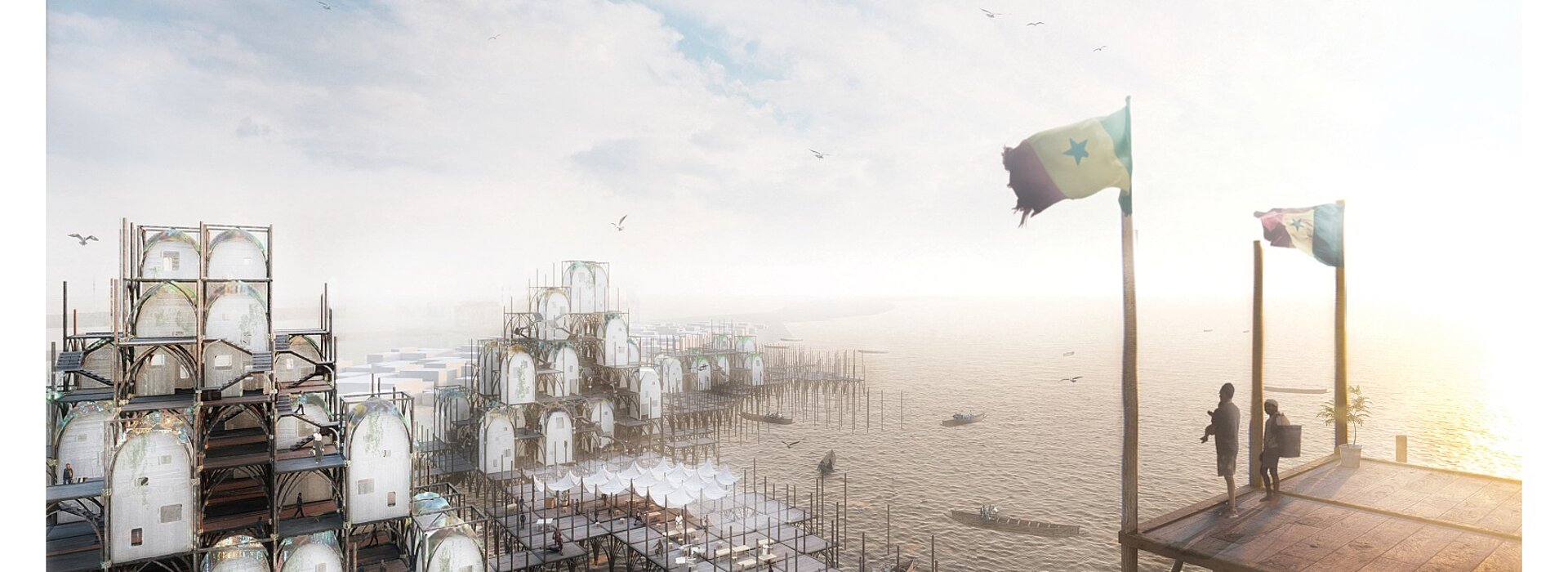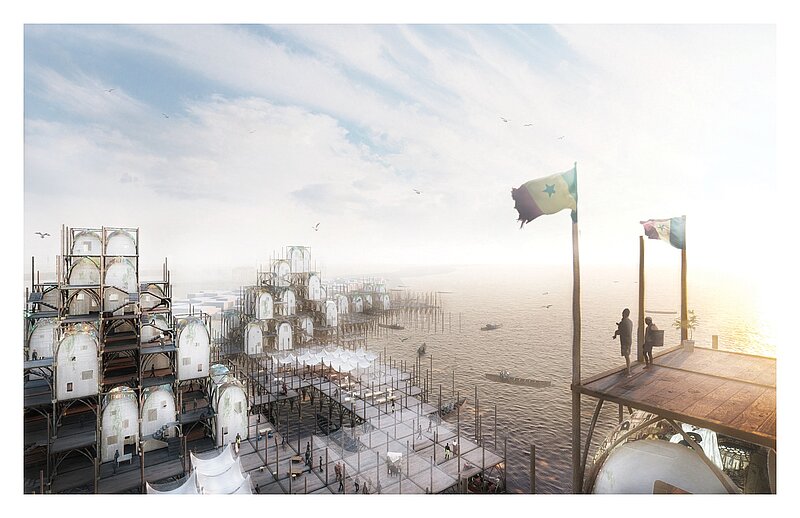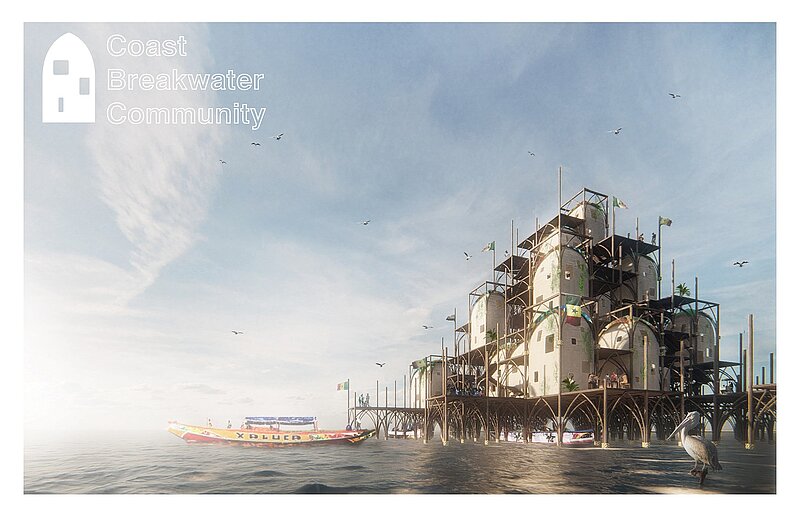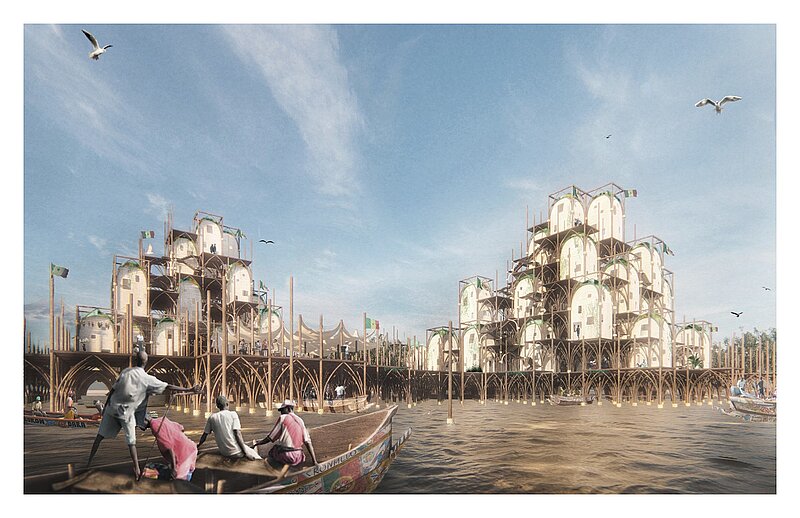Coast Breakwater Community Walking on the oceans. Breaking waves. Creating community
- Year2019
- LocationSaint-Louis, Senegal
St. Louis, located in the northwest of Senegal by the mouth of the Senegal River, has been the home to generations of fishermen. However St. Louis Fishermen community has suffered the grievance of multinational fishing companies in their area, as well as continuous confrontations with their neighboring country, causing a decline in fishing activity. On top of those difficulties, the biggest challenge remains the rising sea levels, called by the residents “L'Avancee de la mer“. The fishermen are suffering from this situation through several ways.
One of the most important is the coasts of St. Louis are threatened by the erosion of beaches, slowly destroying the fishers' houses. According to the World Bank, land is receding as much as 10 meters per year in high-risk areas throughout West Africa. In adiction the tents where the women used to dry and cure the fish originally located on the beach are moved to a cramped space further inland, complicating the general fishing process. Those alterations in the fishing cycle trigger a declination of the Senegalese fish production.
Coast Breakwater Community offers an opportunity to counteract the erosion caused by the level sea rising and in turn provide a better working space for the fishing operations. The name of the project is based on the wooden breakwater technology. How does it work? Wooden piles are installed on the beach, either parallel or perpendicular to the coast and placed vertically on the sediment in order to dissipate the attack of the waves on the beach. It limits the transport of sediments and reinforces the stability of the beach. Coast Breakwater Community imitate the possible random solutions from a inland urbanism in its formation to arrange the placement of the modules according to the use or need of its users. The modulation is reflected in the numerous possibilities of use, such as the creation of workspaces for the drying of fish or maritime port of negotiation.




